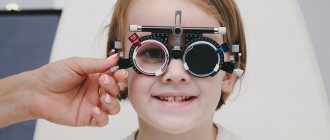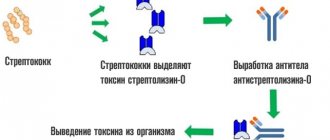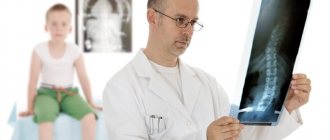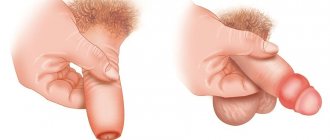Mental retardation (oligophrenia, dementia) is a specific condition caused by a special level of activity of the central nervous system, and not a mental illness. It is chronic, non-progressive and occurs in connection with organic pathology of the brain.
The affected central nervous system limits the intellectual development of the child. As a rule, such a deviation occurs during intrauterine development and is finally formed before three years of age.
Due to various types of brain damage that provoked the breakdown of mental functions, a person can develop oligophrenia even in adulthood. This is called dementia. It should be distinguished from acquired dementia, which refers to a decrease in intelligence due to age-related changes in the brain.
Mental retardation is classified as a severe pathology. However, depending on the form of its development, a specialist can adapt the patient to the surrounding society as much as possible and correct some deficiencies.
CLASSIFICATION OF CU
There are several degrees of this pathology, determined by IQ:
- mild (moronicity) – IQ 69–50. This form is characterized by slight developmental retardation, which allows a person to socialize in the surrounding society;
- moderate (not pronounced imbecility) – IQ 49–35. Such patients have basic communication skills, are able to understand gestures and respond to them, but it is difficult to understand them when they are worried;
- severe (severe imbecility) – IQ 34–20;
- deep (idiocy) - IQ less than 20. It is characterized by practically undeveloped speech, lack of instincts and primitive reactions. Among the additional manifestations you can notice the following: low or complete lack of coordination of movements, apathy, unjustified malice, anger, etc.
Moronicism is, in turn, divided into three more forms (depending on IQ):
- light – 69–65;
- moderate –64–60;
- heavy – 59–50.
Mental retardation, characterized by a decrease in intelligence, disorders of speech and motor development, and emotional and volitional spheres, is a very common disease. In the world, there are from 1 to 3% of people suffering from this disease. The fact that 75% of them have a mild form can “calm down.”
Quite often, this pathology is combined with other quite serious mental and somatic diseases: Down's disease, cerebral palsy, epilepsy, autistic disorders, blindness, deafness, etc.
UL cannot progress, but with a mild degree, timely educational measures and teaching methods can even increase intelligence.
REASONS FOR APPEARANCE
As mentioned above, brain damage and structural defects are to blame for underdevelopment of the brain. There are the following main groups that determine the presence of a control system:
- hereditary diseases (chromosomal and genetic);
- intrauterine infections - toxoplasmos, rubella and others that negatively affect the fetus;
- maternal consumption of toxic substances, alcoholic beverages, strong drugs, radiation, smoking;
- fetal prematurity;
- problems during childbirth and in the first months of a child’s life - oxygen starvation, mechanical head injuries, infectious diseases;
- lack of normal upbringing, training and socialization, the impossibility of full-fledged brain function as a result of this;
- unknown etiology.
Preventive measures
{banner_banstat9}
Prevention measures are a set of simple rules and recommendations:
- identify diseases in expectant mothers that provoke the development of defects in the fetus: rubella, measles, sexually transmitted diseases;
- good obstetric care is required to prevent birth injuries, fetal hypoxia, and infection;
- a healthy lifestyle for a pregnant woman, excluding smoking, drinking, taking drugs and medications that can harm the baby;
- measures aimed at preventing women from contracting infectious diseases.
SIGNS OF MILD UR
Mental underdevelopment with decreased intelligence, congenital or acquired, can be noticed in very young children, three years old. However, the diagnosis is made no earlier than the child reaches seven years of age.
Signs of mental retardation in newborns are almost impossible to detect, especially its mild form. But then this will manifest itself in developmental delays and difficulties in adapting to kindergarten. It is difficult for a child to communicate with peers, find a common language with them, maintain a daily routine, master new skills, and absorb knowledge. He cannot sit in one place, gets tired quickly, does not show any desire to understand the world, and is inattentive.
A child may have a similar but passing problem - mental retardation. The difference is that a child with mental retardation is not always able to learn a new skill, while a child with mental retardation still learns it after several repetitions.
This is why it is so important to detect the symptoms of MR early in order to begin corrective measures immediately. Here they are:
- Abnormal motor development. The baby begins to hold his head up late, tries to sit up, stand up, and walk. His grasping reflex is impaired, he is unable to hold a toy, and a little later, a spoon.
- The processes of excitation and inhibition are unbalanced - the baby is overly impulsive, irritable, or excessively lethargic and slow.
- Belated babble. He begins to speak with a significant delay or there is no speech at all. The child is not able to speak coherently, as it is difficult for him to construct a sentence. He does not understand what is being said to him, so he cannot fulfill even basic requests.
- Poor emotional-volitional sphere, self-isolation, lack of interest in what is happening around.
- There is no interest in toys, their incorrect use prevails, preference is given to primitive games.
- There is no abstract thinking, that is, logic, mathematical and creative abilities.
A few words should be said about emotions: the child experiences grief and joy, hostility and sympathy, is sad and happy, but all this is expressed very weakly, not in many ways.
Outwardly, such a child is no different from his peers. But his inability to concentrate properly leads to learning difficulties.
Children with a mild degree of ID are afraid of a change of environment and are highly dependent on their parents and educators. Difficulties in recognizing emotions create problems with communication, so kids withdraw into themselves. But it is also possible that they draw attention to their person in different ways, often very awkward.
Such individuals are well aware that they are different from healthy people, so they take measures to conceal their problem. Many people manage to gain self-care skills, although this happens more slowly than their peers. The school period is especially difficult for them, since writing, reading and mathematics are difficult for them.
Who is he, a person with mild dementia?
Moronism is the most common and mildest type of mental disability. The severity of the disease can be mild, moderate or severe. According to the dominant manifestations: atonic, sthenic, asthenic, dysphoric.
Patients remember any information slowly and forget quickly. They do not know how to generalize, do not master abstract concepts. The type of thinking is concrete-descriptive. That is, they can only talk about what they saw, without making any conclusions or generalizations. Their understanding of logical connections between events and phenomena is impaired.
Patients with oligophrenia to the extent of debility are practically the most honest people in the world. But not for high moral reasons. These people are simply not capable of fantasizing. With the exception of rare, pathological cases described in judicial practice, they can only talk about what they saw.
During a conversation, one immediately notices: speech disturbances, monotony, lack of emotion, poor vocabulary, primitive sentence construction.
Sometimes such a phenomenon as giftedness in some areas is added against the background of general pathology: the ability to mechanically memorize large texts, absolute pitch, genius in mathematics, artistic gift.
Patients do not like change of environment. Only in a familiar environment do they feel confident, protected and even capable of independent life.
They are highly suggestible, which is why they are easy prey for criminals who use them like zombies. It is easy to convince a gullible oligophrenic of something, to impose your point of view, which they will perceive as their own. From among them often emerge uncontrollable and unreasoning fanatics who never change “their” beliefs.
Will and emotion are almost undeveloped. They are guided by instincts: sexual, food. Sexual promiscuity is an unpleasant phenomenon that causes disgust among others.
In persons suffering from debility, instincts are almost impossible to control and correct. Food instinct is the basis. They eat a lot, are indiscriminate in their food, and have a poorly developed sense of fullness.
In general, with successful socialization, they are excellent spouses (suggestibility), not prone to conflicts, and very obedient (no judgment of their own).
They are easy to manage. Because of their suggestibility and controllability, they can be both completely adequate members of society and absolutely asocial, maliciously vindictive and cruel.
They can have a very attractive character: kind, like children, warm-hearted, devoted to those who care about them. Along with them, there are individuals who are aggressive, angry, stubborn, and vindictive.
Moronism is expressed both in excessive excitability and in obvious inhibition (in common people the latter are called “brakes”).
Persons diagnosed with “moronism” do not serve in the army, do not drive cars, do not have the right to purchase and store weapons, and work in state and municipal institutions is not for them. Systematic observation by a psychiatrist increases their chances of adapting to the outside world.
FEATURES OF CHILDHOOD DEMENTIA
Preschool age only forms a personality, which is characterized by many factors: developmental characteristics, temperament, individuality.
Only after the child goes to school can parents identify a developmental disorder. Such children practically do not master the program. It is not possible to attract the attention of oligophrenics and fix it on something. Difficulties arise with memorization and retelling—children suffering from ID are unable to retain received information in memory for a long time.
A “special” student usually does not understand the essence of the task and does not grasp the connections between things and phenomena. It is very easy to intimidate him in such a situation: you just have to shout, and the psychological trauma that follows the stress is inevitable.
Depending on the environment, such a child can develop into two completely different personality types:
- kind and sympathetic, ready to help at any moment, vulnerable and warm-hearted;
- embittered and aggressive, who, having no desires and feelings of their own, are subject to the negative influence of others.
A practicing psychotherapist shared the story of a boy who was doomed to mental illness while still in utero development. A dysfunctional mother carried a child in violation of all acceptable rules: she smoked, drank alcoholic beverages, and took psychotropic drugs. After the birth of the child, he was deprived of proper attention.
After some time, the visiting nurse noticed some mental underdevelopment of the baby: he could not hold his head up on his own and did not make any sounds. Thanks to the prompt and coordinated work of medical workers, the boy was saved. And at the moment it has practically adapted to modern living conditions.
A predisposition to mental illness or unacceptable behavior of a pregnant woman is a reason to warn her about the possible dementia of the unborn child.
However, a loving and caring mother who leads a healthy lifestyle and has absolutely no prerequisites for the occurrence of mental pathologies can also face the problem of dementia in her child.
Having noticed the first alarm bells, which are a definite reason for consultation, you must immediately contact a qualified specialist. This will give you the opportunity to deeply adapt your baby to society before the moment of his socialization.
Signs of retardation
The disease is accompanied by extensive symptoms. The most pronounced symptoms of debility will be the patient’s inability to develop complex concepts, think abstractly and make generalizing conclusions. In children with debility, a visual-figurative type of thinking is observed. Namely, they are not able to perceive events as a whole. Even if they correctly perceive the images, they can hardly find connections between them, and also cannot compare them with each other.
In addition to mental retardation, such children also often experience speech underdevelopment. In particular, they have slow speech, inertness, and poor vocabulary. Even if children are able to navigate well in ordinary everyday situations, they still have limitations in abstract thinking and generalization. Patients can have either a very friendly and calm character, or an angry, vindictive character.
Children with mental retardation find it extremely difficult to study at school, since they have too difficulty understanding spelling rules, are practically unable to retell the text they have just read, and cannot figure out assignments on their own. The most difficult thing for these children is mathematics. However, it is worth remembering that among children with various forms of debility there are many partially gifted individuals. These can be children with absolute pitch, artistic talents, excellent memory, and the ability to do mental math.
Moronism also negatively affects the formation of personality. Patients have poor development of volitional, moral and aesthetic qualities, as well as limited needs for cognition. In this regard, children are not able to form their own judgments, so they often imitate others and adopt other people's views. This is a rather dangerous consequence of debility, since due to weakness of will, the inability to form one’s own opinion and defend it, patients can become an obedient tool for other people. Without understanding the consequences of their actions and following other people's orders, they can commit dangerous crimes.
DIAGNOSTICS
Mental development disorders are difficult to detect at an early stage. However, such diagnosis is extremely necessary for early correction and compensation of the detected defect.
The diagnosis of “mental retardation” is made on the basis of special methods that allow assessing the intellectual level of an individual. Sometimes specialists use neuropsychological diagnostics, which allows us to determine the level of development of higher mental functions, as well as assess the child’s potential.
A correctly made diagnosis makes it possible to timely develop corrective methods to eliminate the pathology and treat it. In this case, the doctor must make sure that the little patient does not have signs of progression of underdevelopment or signs of more serious mental illnesses (schizophrenia, schizoaffective disorder, etc.).
It is also important to determine that the patient’s condition is not pedagogical neglect. This often happens to children who have lost their parents and were sent to an orphanage. There they can be subjected to harsh treatment, bullying, violence, etc. But if the child changes the situation for a better one - he is adopted, he lives and is raised in a normal family, then his condition returns to normal.
Treatment for debility
Patients who have been diagnosed with debility must be registered with a neuropsychiatrist. If the cause of the disease is complications of endocrine diseases, the patient should also be observed by an endocrinologist.
Treatment begins with determining the cause of the disease, since the doctor’s tactics depend on it. For example, children with toxoplasmosis or congenital syphilis are prescribed etiotropic drugs. Patients with fermentopathy are prescribed a special diet. In case of endocrinopathy, hormonal therapy is prescribed.
To eliminate the manifestations of the disease, the patient is prescribed symptomatic therapy, including the following drugs:
- psychotropic;
- dehydration;
- anticonvulsants;
- general strengthening;
- neuroprotectors;
- metabolites;
- nootropics.
In case of asthenia and excessive fatigue, the patient is prescribed amphetamine, which stimulates the mental sphere. For children who exhibit excessive emotional excitability, the doctor prescribes Elenium, aminazine, and haloperidol.
In addition to symptomatic therapy, patients also need corrective treatment, including speech therapy, pedagogy, and psychological areas. A child needs this treatment because it allows him to learn better, acquire knowledge and skills necessary to solve everyday situations, and develop independence. Speech therapy involves correction of stuttering and correction of systemic speech underdevelopment.
PREVENTION AND TREATMENT
In order to prevent the development of mental retardation in the womb, pregnant women who have an unfavorable history (physiological indicators, predisposition) are recommended to undergo a more thorough examination. Doctors place women under special observation who suffered from viral diseases during pregnancy.
Birth injuries received by newborns, as well as infectious diseases they suffered at an early age, can lead to brain damage.
A child with mild mental retardation has the opportunity to develop and learn within the limits of his biological capabilities. This pathology is incurable, but its timely and competent correction will make it possible for such a person to become a full-fledged member of society, albeit with limited abilities. A special role in this case is played by the environment and perception. There is no doubt that such people require increased attention.
Mental retardation requires close contact with loved ones, teachers, doctors, and psychologists. The doctor selects specialized institutions for children with mental development problems taking into account the child’s capabilities and abilities. Additionally, the psychotherapist can prescribe medication support using pharmacological drugs. Medical and educational measures and labor training for the mentally retarded show good results.
It is always important to remember that any mental illness is not a death sentence. The main thing is to contact a specialist in time, who will help make your stay in society as comfortable and fruitful as possible for the patient.
In the case of mild oligophrenia, experts give a relatively favorable prognosis. This applies to cases not burdened with concomitant psychopathological and somatoneurological disorders. People with such deviations are quite capable of mastering certain types of professions, can adapt to independent living, and even create families.
Diagnosis and tests
With the onset of the first year at school, learning difficulties usually make you think about the reason that causes them. The first school year is the time to make a diagnosis. Debility is diagnosed after examination by a psychiatrist, neurologist, conversations with a psychologist, and consultations with a speech therapist.
Psychological tests plus quantitative measures of intelligence and personality factors help in making a diagnosis. The extent of the disease is determined by assessing the level of IQ. There are a lot of techniques. Their goal is to measure mental properties in the areas of thinking, intelligence and speech. For children and adults, tests are offered according to age.
Eysenck test
Eysenck test (intelligence test) - determines the level of development of intellectual abilities. This is a questionnaire with forty tasks in logic, mathematics and linguistics. You have 30 minutes to complete the task. The test scale starts from a lower limit of 70 and reaches its peak of 180 points:
- the upper limit
(180) indicates the genius of the subject, so rarely does anyone achieve it: there are not many geniuses in the world; - normal option:
90-110 points; - less than 70
is a reason to be wary, since 70 points is the threshold separating the healthy from the sick; - Anything less than a 70
-point value suggests pathology.
The Eysenck test itself does not provide grounds for making a diagnosis. It makes sense only in conjunction with other methods to establish the degree of development of intelligence.
Wojnarowski test
The Voinarovsky test (for logical thinking) is a certain number of statements from which you must choose the correct one. The good thing about the test is that it does not require mathematical knowledge that preschoolers do not yet have.
It is best to start with the simplest tests: “remove the extra object”, “complete the row of pictures with the missing one”.
Speech Development Assessment
The following tests will help determine how well a child has written and spoken language:
- insert the missing words into the story;
- retell an excerpt from what you read yourself, or what you heard from the tester;
- place commas correctly in the text;
- come up with a phrase from individual words.
Torrens test
The Torrance test determines the degree of giftedness of the patient. It consists of tasks using figures. The test taker is given different figures:
- a figure in the shape of an egg, the child is asked to depict in the drawing something similar to this object;
- tasks with 10 cards and fragments of figures;
- sheet with drawn paired straight lines.
The test determines creativity, innovative thinking and the ability to analyze and synthesize.
In order not to make a mistake with the diagnosis, it is necessary, in addition to tests, to consult various specialists, data from clinical studies, information about the child’s family, the environment in which he grows and is brought up. We also need to remember his personal characteristics so as not to confuse the silent genius (Einstein) with the mentally retarded.
CORRECTION
It is impossible to completely cure mental retardation, even in a mild form, since organic brain damage is irreversible. But it can easily be corrected by child psychiatrists and teachers at specialized schools. Special programs have been developed, based on concrete and visual methods, to help children acquire simple skills and the ability to demonstrate compensatory capabilities.
Training takes place at a slow pace, familiar to the patient. As a result, the patient can freely adapt to the surrounding space and respond appropriately to its changes.
The neurocorrectional assistance program takes into account the child’s neuropsychological characteristics and strengths. It allows you to develop:
- fine motor skills, coordination and motor skills;
- visual-motor coordination - strengthen the muscles of the eyes and the tracking movements of the latter, which is necessary for reading and writing, establish communication between the eye and hand;
- stable connections between the hemispheres of the brain to increase the speed of processing sensory information;
- attention, self-control;
- functions of thinking, spatial perception, ability to construct coherent speech and logical-grammatical construction;
- concept of wrong behavior;
- auditory perception of speech and non-speech sounds, the ability to differentiate tempo-rhythmic patterns.
In some cases, to achieve your goals, there may be a need for a speech therapist, speech pathologist, or neurologist.











